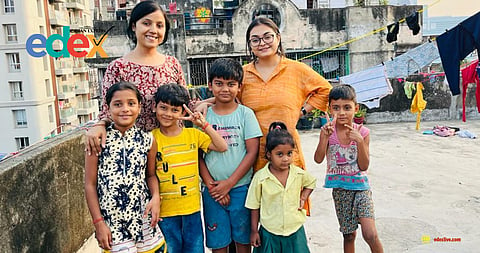

What are the outcomes we expect in exchange for education? Just a child coming from a privileged background receiving a degree in their hand, or a Nation where all children coming from different socio-economic backgrounds receive the same quality education that is their right?
NEP 2020’s vision supports the latter one. It talks about “Universal access to Education”, where education should be accessible to all. No caste, class, gender, or special ability discrimination come in its way. It emphasises Indian Ethos, Equitable and Vibrant knowledge.
Here, in this article, we will talk about the possible steps that can be taken to realise NEP 2020’s vision, and how different organisations and foundations in the social sector, are leveraging the same ideas.
Our nation is diverse; our society is diverse. Even before jumping into the steps taken towards the NEP’s vision (2020), it is important to know why it is crucial to execute such a vision. The idea of inclusivity takes place when the idea of diversity is accepted. Diversity in class, caste and gender can be observed. Diversity in the urban and rural lives and the diverse scale of privileges that come with it, is a discussion-worthy topic.
In India, the Right to Education (RTE) Act, 2009 ensured free and compulsory education for children between 6-14 years. On the other hand, the National Education Policy (NEP), 2020 expands the RTE to 3-18 years. This ensures that pre-school children and senior secondary students get access to quality education.
NEP 2020’s vision also includes education rooted in the Indian ethos where different values, principles and cultures find their own and equal space that shape the way people, hence society, think, live and work. The policy also talks about providing equitable knowledge that is accessible to all without any discrimination and vibrant knowledge, that learning should be active, creative and dynamic, which will build the innovation, curiosity, critical thinking and problem-solving skills of the students.
In our nation, the schools have different governing bodies and are of different natures. They are there to cater education for a larger group. Governments adopt the PPP (Public Private Partnership) model, where the development sector comes in to implement the policies on ground level, with a larger audience, resources and network by providing training, workshops, initiating projects and developing resources/contents to make education more inclusive and contextual.
Different organisations and schools of the social sector are incorporating diversity and inclusivity in their vision, like Azim Premji Foundation (APF) - Strengthening public school systems especially in rural and disadvantaged areas (teacher & curriculum support), Central Square Foundation (CSF) - Policy, research, systemic reforms, and EdTech., Mantra for Change- Improving public education in India by empowering education leaders, transforming schools, and working systemically so that every child gets a fulfilling, enriching learning experience etc.
In the year 2022, I joined the Teach for India (TFI) fellowship, where they build youth leadership by providing them training on teaching, policies, different paths in the social sector, sending them inside the classrooms, working directly with the children and the system in general, facing grassroots challenges and teaching in low-income private schools or government schools. I was placed in a Kolkata Municipal Corporation School. The students were mostly from Bihar, and the parents were migratory workers.
Simultaneously, different schools of the social sector are also working and contributing directly to realise the vision of NEP 2020. Poorna School in Bengaluru contributes by creating an inclusive, socially just model of schooling; serving learners with special needs; working across socio-economic divides; and promoting sustainability, community engagement.
Rishi Valley Education Centre contributes by combining high-quality schooling with broader community health, environmental, and educational outreach programs, especially in underserved rural areas. Digantar in Jaipur contributes by serving marginalised children, experimenting with more humane, just educational models, capacity building among educators, and influencing broader systems.
Currently, after the fellowship, I am working in a school named Pokhrama Foundation Academy, located in a remote village of Bihar called Pokhrama, one of the more developmentally challenged areas (poverty, low literacy, caste/gender discrimination).
The school chooses to work in places “where opportunity is scarcest”. The aim of the school is to provide quality education to the children who do not have easy access to it. I observed ‘mindfulness’ when I came to the village and observed the school function in its own tune and rhythm, making sure every learning, every activity caters to a mindset towards learning.
A space where discrimination in most aspects is so prominent, this school is mindful enough to create awareness, generate compassion and build critical thinking minds in the children of this village.
Apart from “Abhaydanam”, fearlessness, the school practices the Constitutional value system. Flexibility in pedagogy ensures that learning is not only restricted to classrooms and textbooks. Teachers coming from different states of the country and speaking in their dialect, practising their own culture, present an image of diversity from a young age to the students. Emphasising extra-curricular activities ie., sports, singing, debating, elocution, performing arts etc., builds confidence and a variety of skills for the students.
To solve a bigger challenge, we need to look at our locus of control, something that can be practised every day to realise the vision of NEP 2020.
Mindfulness here works as a tool. It is about being present, aware and compassionate in small moments of everyday life.
(Written by Bhumika Chakraborty, Educator, Community mobilizer, Pokhrama Foundation Academy, Teach For India Alum. Views expressed are their own.)
